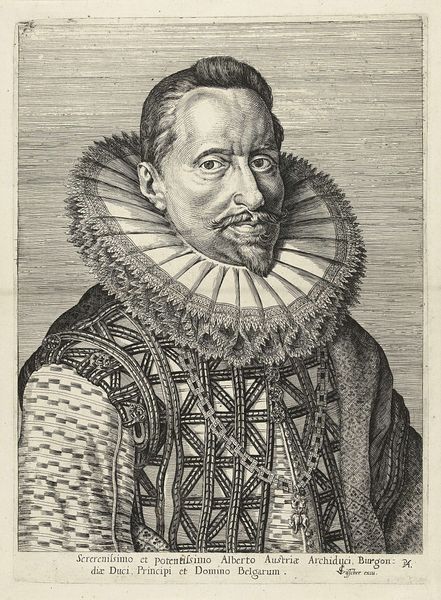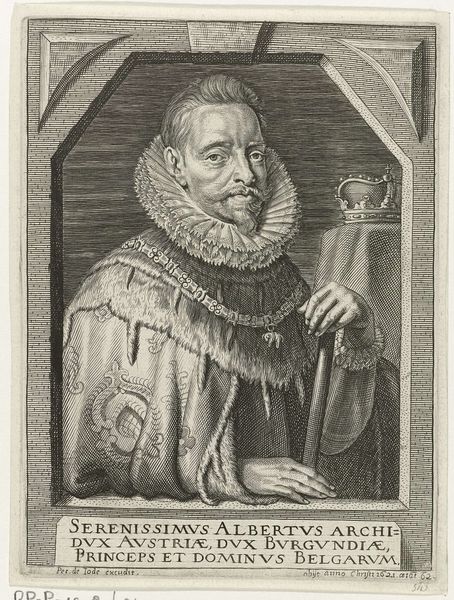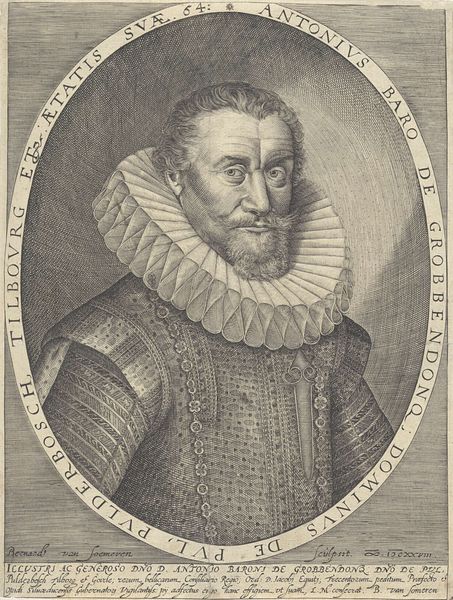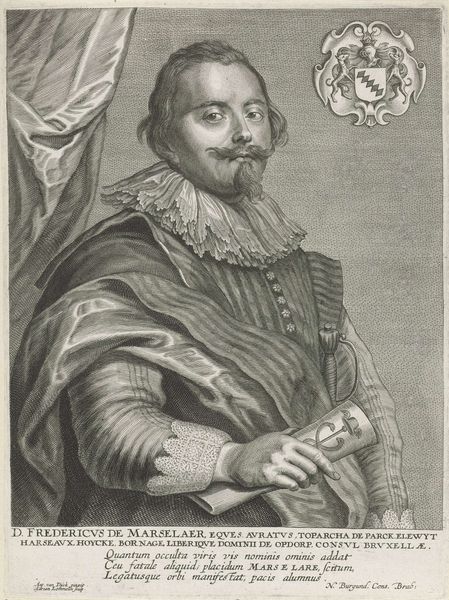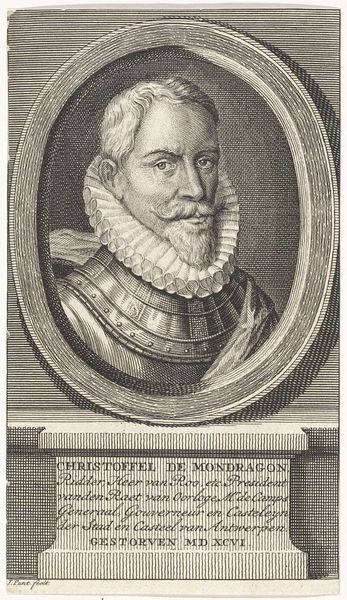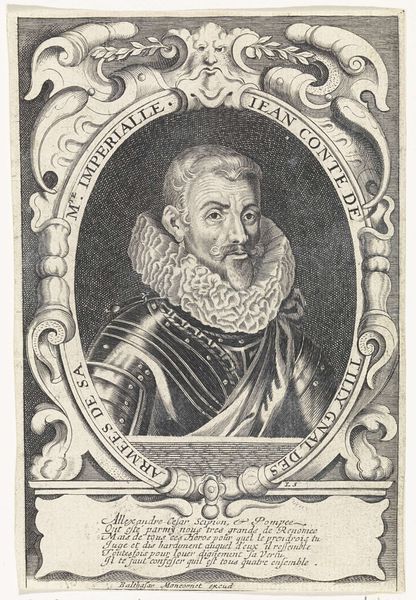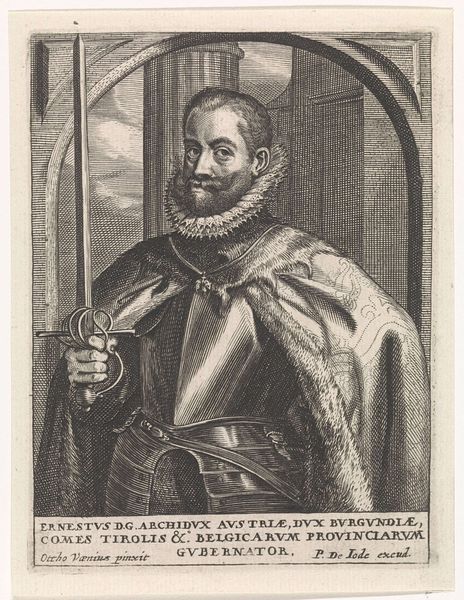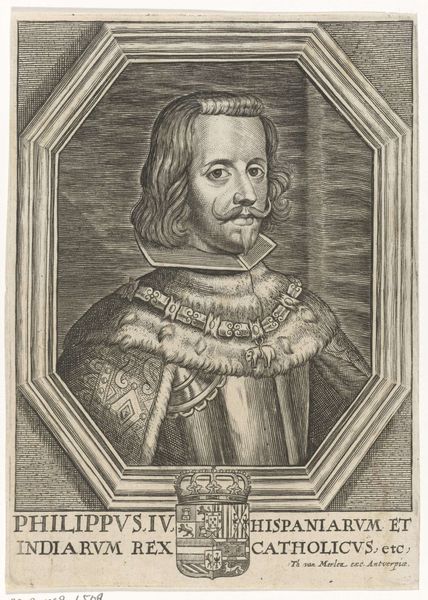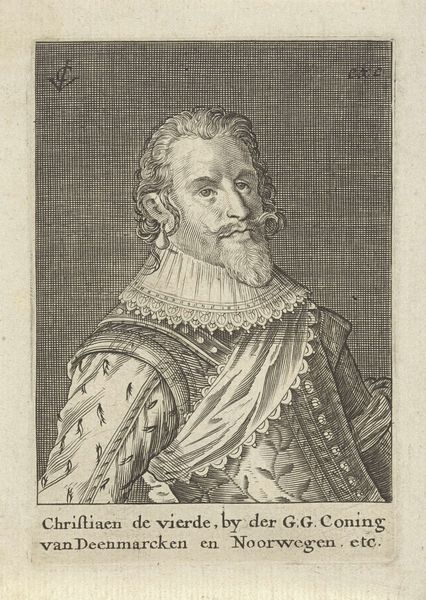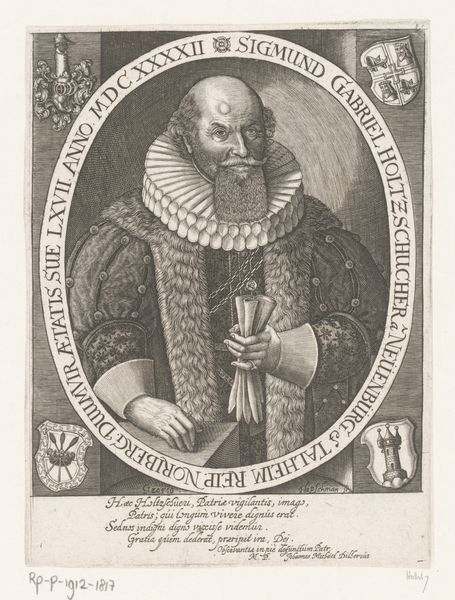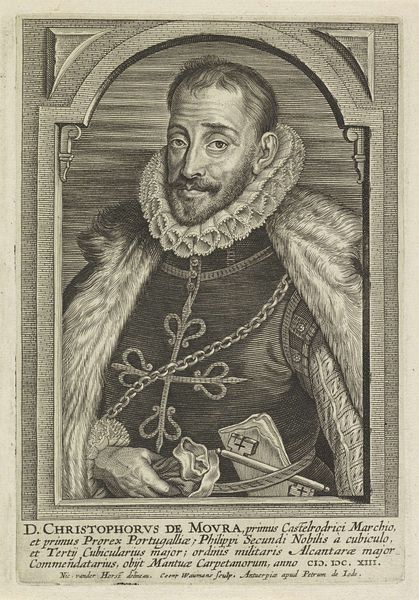
print, metal, engraving
#
portrait
#
baroque
# print
#
metal
#
old engraving style
#
portrait drawing
#
history-painting
#
engraving
Dimensions: height 167 mm, width 120 mm
Copyright: Rijks Museum: Open Domain
Editor: Here we have Pieter de Jode the Younger’s “Portret van Ferdinand II, keizer”, a print from sometime between 1628 and 1670. It’s amazing how detailed the engraving is! What strikes me is the sheer visual language of power and authority, it’s incredibly overt. How do you interpret this portrait within its historical context? Curator: It’s interesting you pick up on the visual language of power. Think about the role of portraiture during Ferdinand II's reign, a period marked by the Thirty Years' War. How do you think this image might have been used to solidify his authority amidst widespread conflict and religious division? Editor: Well, given the context, I imagine it was used as propaganda, trying to project an image of strength and stability. Was image production typically wielded to that degree in the 17th Century? Curator: Absolutely. Consider the intended audience and how the print may have circulated. Images like these were powerful tools for shaping public opinion and reinforcing social hierarchies. Notice how the details such as the laurel wreath or even the crisp ruff might speak to specific socio-political ideas. Editor: I see your point. The laurel wreath, of course, connects him to the Roman emperors, legitimizing his rule through historical precedent, it also might also be to suggest, the peace brought by his leadership, in a war-torn Empire. Is that building in the background an intended message, and of what nature? Curator: It seems there is an intended message to give the background. Ferdinand wanted the Holy Roman Empire united again under the one true Church. He might have been presenting to his subjects his intent and authority through propaganda to sway his kingdom back to the church, which at the time was a major part of the war. It makes me consider, propaganda in Baroque paintings served very powerful functions. Editor: Thanks, your insights really illuminated the painting's cultural and political context for me! Curator: And it's crucial to remember that it’s an interpretation, a very political object, created for a particular purpose. Analyzing that, allows a much broader understanding of Baroque painting, as a whole.
Comments
No comments
Be the first to comment and join the conversation on the ultimate creative platform.

